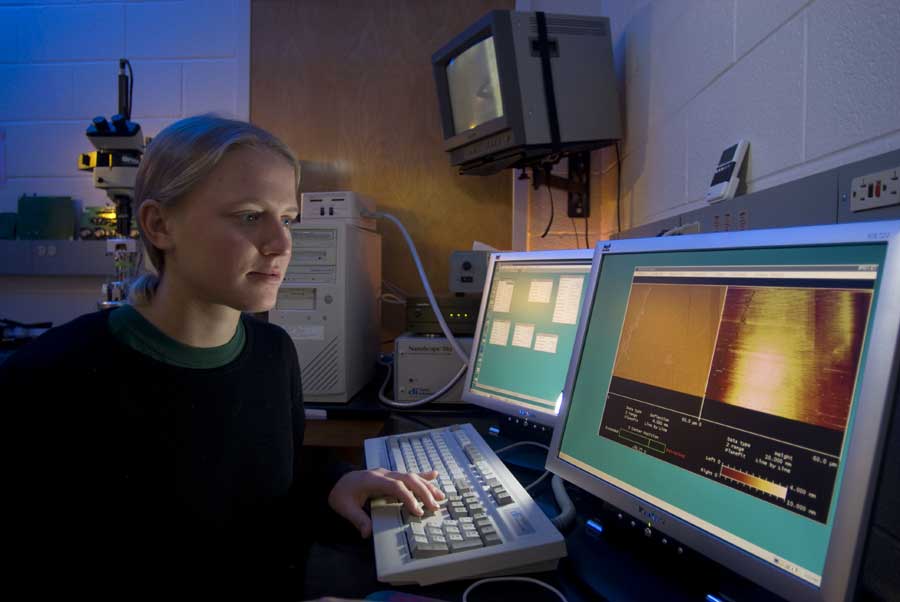National Science Foundation Fellow aims to decipher how animals form complex skeletal structures

Laura Hamm of Raleigh, N.C., a Ph.D. student in the Department of Geosciences in the College of Science at Virginia Tech, has received a National Science Foundation Graduate Research Fellowship (NSF GRP), one of only four such fellowships awarded in geochemistry across the United States this year.
Her research is focused on a better understanding of biomineralization — the processes by which organisms direct the formation of minerals into skeletal structures with exquisite form and function.
Hamm said she has always been fascinated by how organisms form complex minerals. Seashells are an example of biomineralization that demonstrate the myriad forms that can be achieved from the same material, calcium carbonate. She is studying the mechanisms by which such structures are formed.
“In nature, we see that proteins make up a large part of the organic matrix responsible for directing mineralization. We are using the atomic force microscope (AFM) to look at how these biomolecules are influencing mineral nucleation and growth,” said Hamm, who is part of Geoscience Professor Patricia Dove’s group.
“The AFM allows us to zoom in on a calcium carbonate surface at one specific growth site. We watch how the site grows and measure the energies and speed of mineral formation,” Hamm said.
Using this approach, Hamm is able to vary the solution and protein chemistry that the crystal sees during growth and observe the effects. As calcium and carbonate ions flow over the surface, some ions are pulled onto the surface to develop the structure. “The focus of my study is discovering how peptides affect the process of removing ions from the solution to form the mineral and modify the shape that develops,” Hamm said.
By gaining this understanding, she will then direct her attention to studying how organisms make skeletons of different calcium carbonate polymorphs, which are mineral phases differing in their structures and stabilities. The question of how biomolecules influence the growth environment within the tissues of an organism to determine polymorph selection is a new area of research.
Hamm’s interests in understanding fundamental processes of mineralization is another example of how research in geosciences is a naturally interdisciplinary endeavor that requires expertise in chemistry, biology, and physics across the College of Science. Her findings will have potential applications in many fields, such as working at the nanoscale to create new materials, and deciphering the global climate record from skeletal deposits left by marine life over millions of years.
The NSF GRP is designed to provide opportunities for advanced education that prepares students for a broad range of disciplinary and cross-disciplinary careers. “The fellowship is providing the resources for me to start my research career,” said Hamm. She is also engaged in outreach, visiting elementary schools as part of Dove’s group and providing instruction in the use of the AFM and on how nanoscience applies to geosciences for middle school and high school students visiting Virginia Tech under the auspices of the Johns Hopkins Center for Talented Youth.
Hamm received her undergraduate degree in environmental chemistry from Appalachian State University. In addition to her enthusiasm for science, she is an avid runner and mountain biker.
PHOTO CAPTION: Virginia Tech geosciences Ph.D. student Laura Hamm looks at images from the atomic force microscope (AFM) that show the topography of the calcite surface being scanned.



.png.transform/m-medium/image.png)
